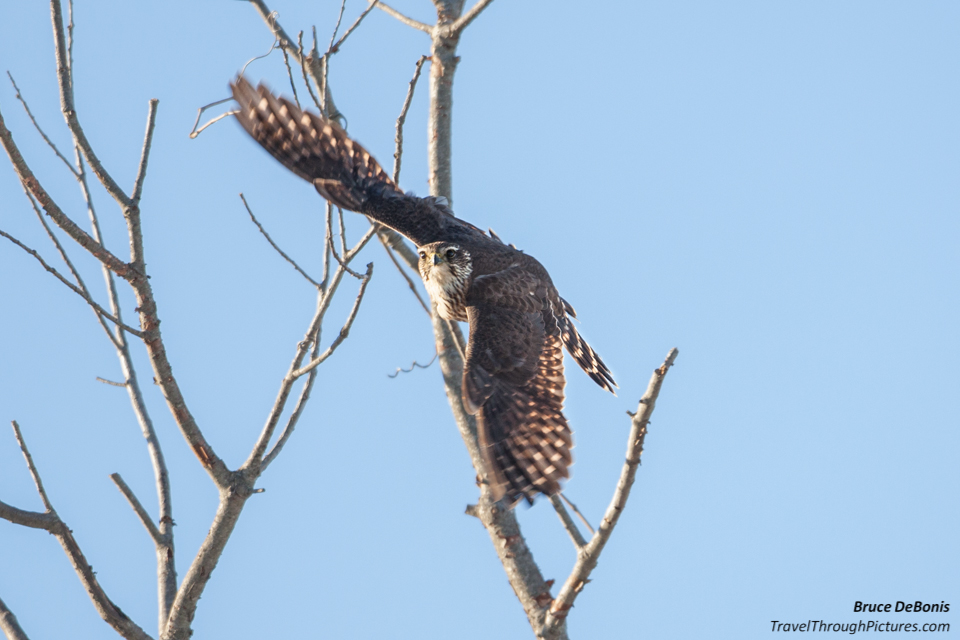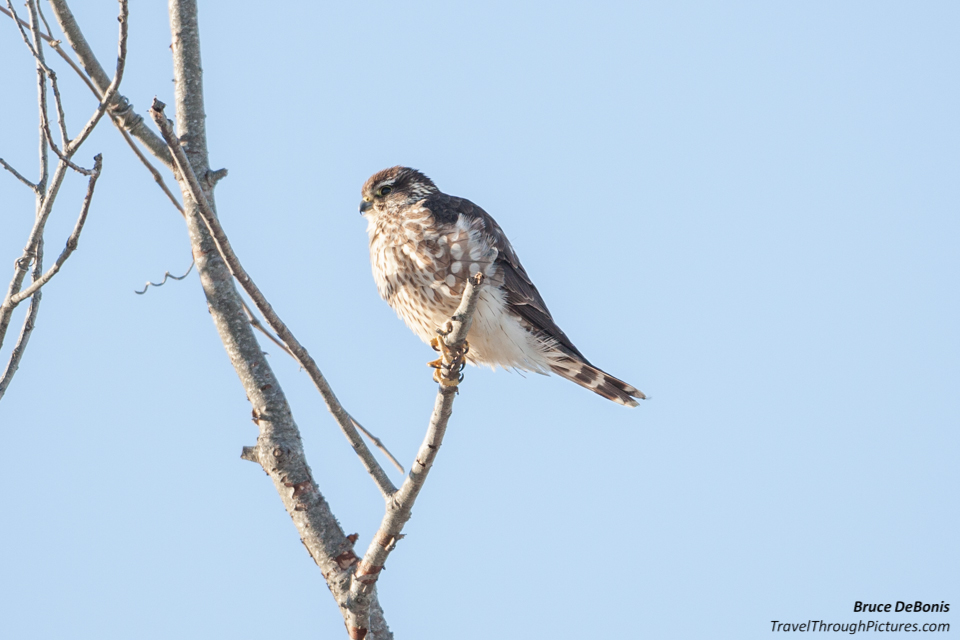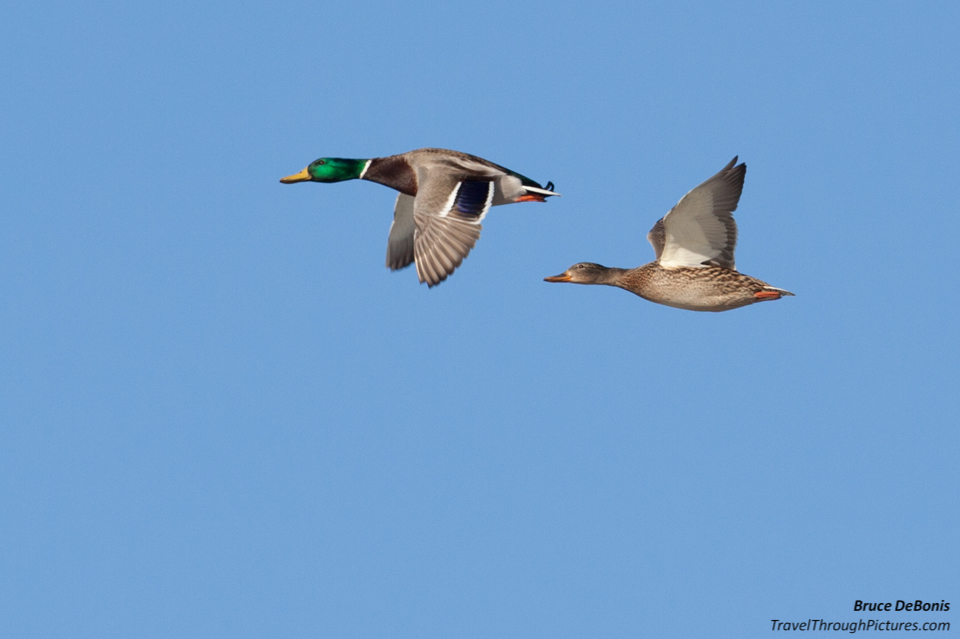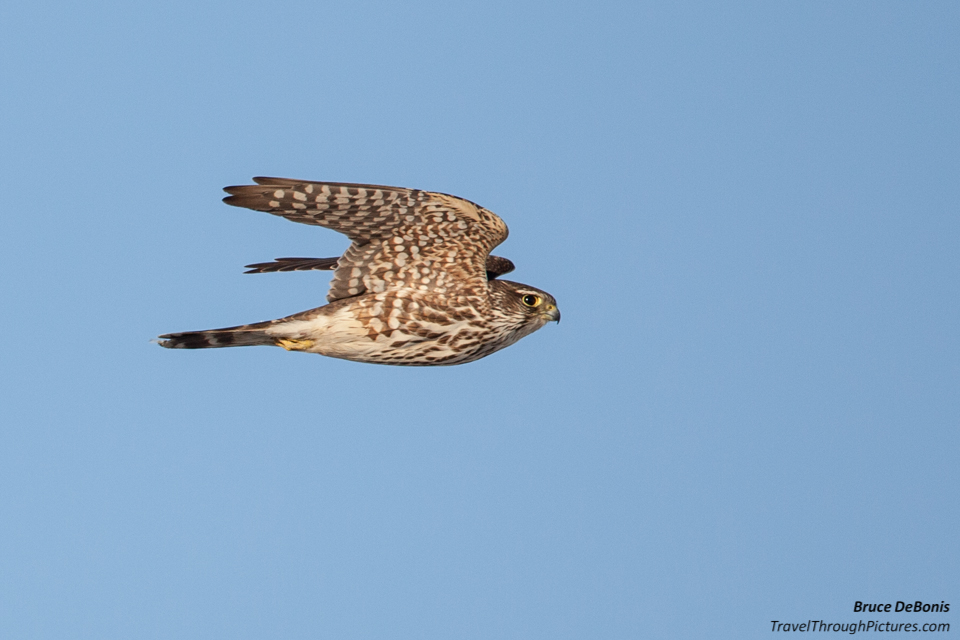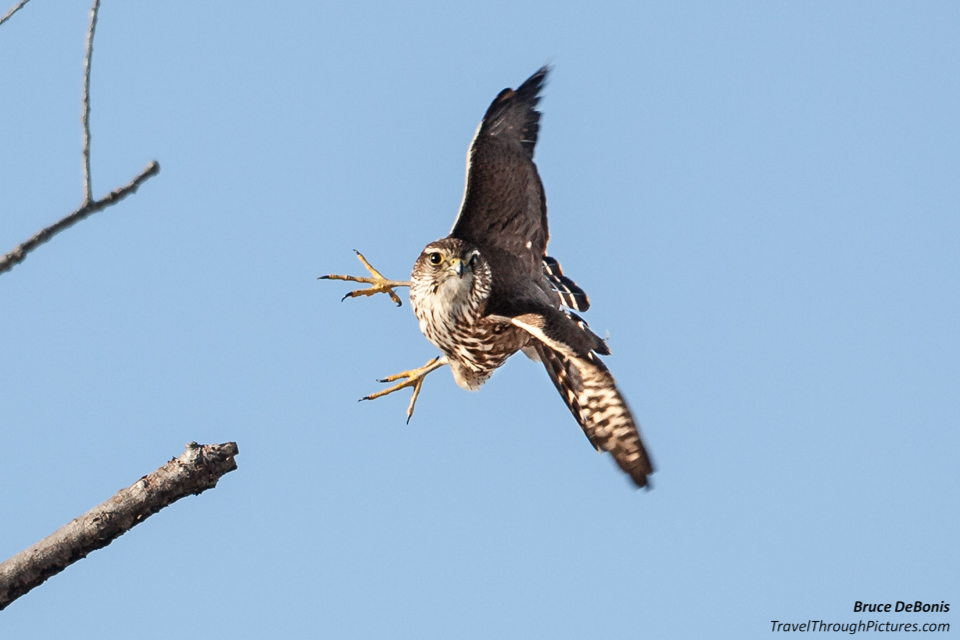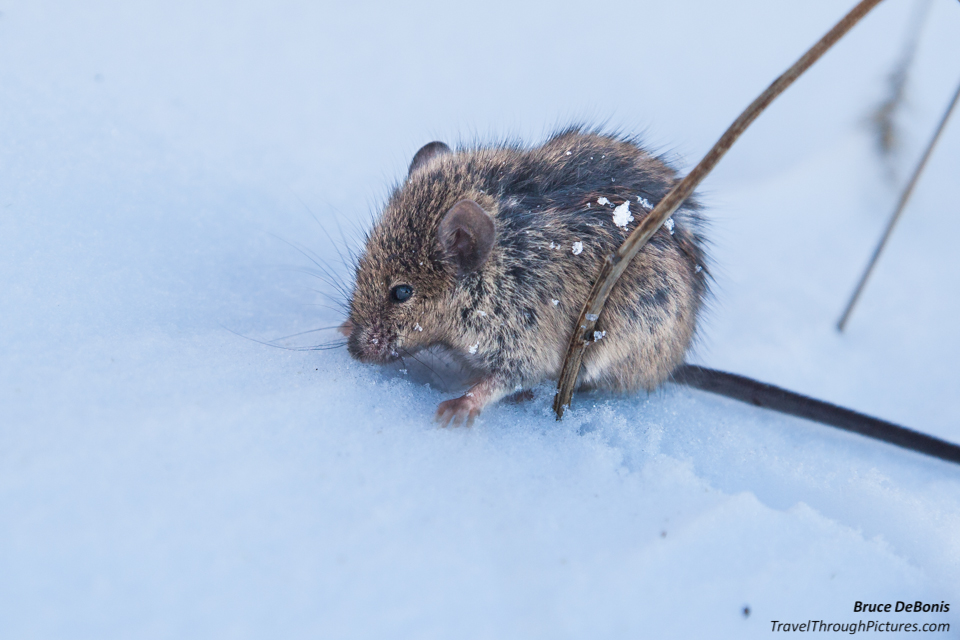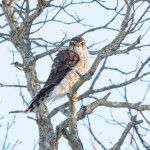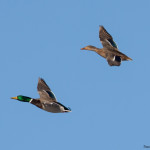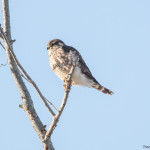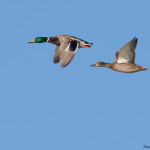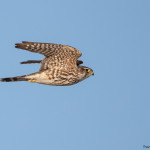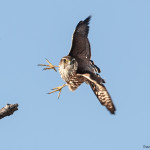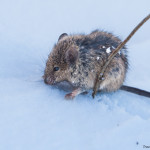Winter Day in a Nature Reserve
I froze my…. shutter off! The day was a beautiful, sunny, snowy day on January 4…. just gorgeous but oh so cold. These pics are not great, but an example of what you can see in just a few hours in the marshes of New Jersey.
If you get out there, stop, wait, and pay attention, you can see quite a bit of animal and bird activity around you. The marsh was frozen so I didn’t see many ducks, snow geese, or other water fowl, but I did see my first Merlin. Saw a few hawks, herons and other typical residents but did not get close enough to them for any good photography.
This female Merlin is a small falcon and they eat mostly other birds. When I first saw her perched in a tree, I didn’t get any good shots as she took off when I came near her. But birds tend to come back and she came back about five times. Don’t get discouraged if a bird you are interested in flys away; stop, wait, and be patient as they usually return. She flew a circuit around the near edge of the frozen marsh stopping almost always in the same trees to scan for prey. These buggers fly really fast and with determination always beating their wings and rarely gliding so catching them in flight is real challenge.
This little mouse wasn’t moving much and I was afraid the cold was doing him in. So after snapping a few shots of him, I picked him up and moved him into some thick brush where there was a little hole in the snow and some direct sunlight. With luck, I hope to see him another day.
The common-as-dirt Mallard Ducks flew overhead, and being kinda bored, I fired off a few shots. What the heck.
Tip for Shooting in Bright Sun Light – Geek in Action!!
When you shoot in bright sunlight like I did here, I usually bump my exposure compensation up by +1 or even up to +2. This would normally overexpose the pictures and wash out the light parts, but when you shoot small dark animals and birds, the camera is fooled into thinking the scene is brighter than it really is. The camera then, improperly, darkens the exposure. This almost always happens when you are shooting a bird with a sky background (skies are very bright, even if full of clouds). If you don’t use exposure compensation, the birds end up too dark and sometimes even blacked out. If you try to lighten them in software later, the dark parts are full of ugly digital noise and nasty stuff so will look awful after adjustment. To avoid this, you really want to get the camera to overexpose as much as possible.
I fire off a few test shots of a scene and then look at them on the camera’s LCD. Since I turn on overexposure alert in the camera menu system, overexposed areas will blink. I then turn up my exposure compensation and take more test shots. When the scene on my camera’s LCD starts to blink with overexposed areas, I usually back off the compensation one notch. This approach of purposely overexposing your pictures is called “exposing to the right” and will capture more digital information than having a darker subject. When you adjust in software later, there is more digital information captured to tweak with less noise, and your pictures will look way better when you are done.
By the way, the picture above of some geek in action, was taken by a friend of mine, Brian Bower. Click here and check out his his super cool website.
The Equipment:
- Canon 5D MkII
- Canon 500mm L f/4.0 IS
- Gitzo 3530LS carbon fiber tripod
- Wimberley II gimbal head
- LightRoom 5.3



